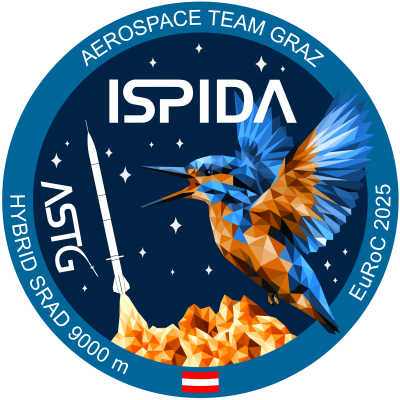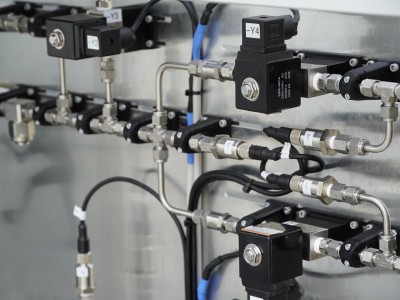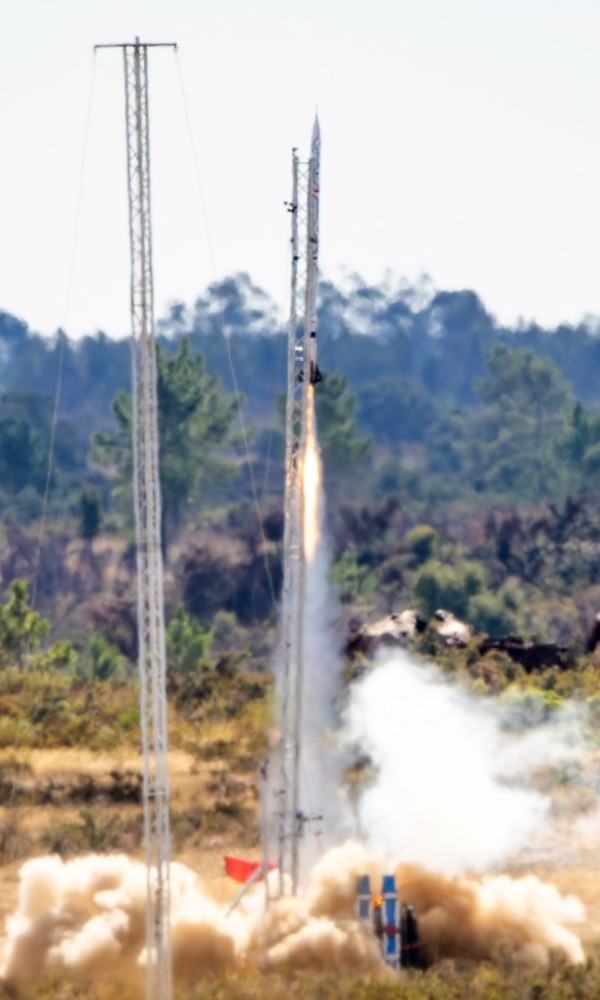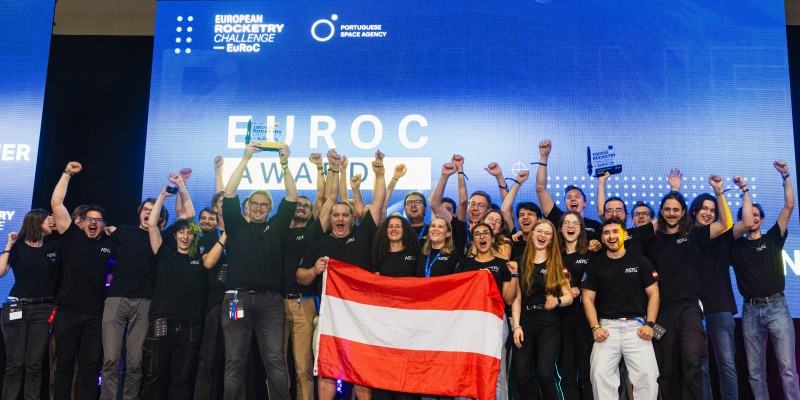
EuRoC 2025 Competition Rocket 🥇
Building on the success of HALCYON and ALCEDO, ISPIDA features our latest hybrid rocket engine. Named after the European kingfisher, the supersonic rocket reached an altitude of 9368m at the European Rocketry Challenge 2025. By performing flawless operations, we could secure the H9 Flight Award and the prestigious overall ranking EuRoC Award.



The single-stage hybrid uses hydroxyl-terminated polybutadiene as solid fuel, N2O as oxidizer and N2 as pressurizing gas. With a burn time of 9.5s and a total impulse of 32.1kNs, the propulsion system enables the supersonic vehicle to reach its target apogee of 9000m.
The engine builds upon ALCEDO and features an actively controlled propulsion system, which incorporates an electronically regulated pressurization valve to provide a stable oxidizer tank pressure. The combustion chamber utilizes a twisted finocyl geometry that enhances regression rate and combustion efficiency without the need for energetic additives.
The aerostructure is optimized for strength-to-weight, using CFRP and GFRP composites depending on RF-transparency requirements. An integrated air brake system provides active apogee targeting, while a dedicated pitot-static probe enables real-time airspeed and altitude measurements.
The custom-developed flight computer integrates power management, avionics and recovery control. It collects data from multiple barometers, IMUs, sun sensors and internal thrust measurements.
Distributed CANary nodes provide a robust data acquisition across subsystems.
The MCUs communicate through an SRAD telemetry system that employs a self-developed packet protocol across multiple data links, including wireless LoRa and both wired and wireless ground networks. The LoRa communication is made possible by a custom patch antenna mounted on the outside of the rocket.
For recovery, ISPIDA employs a dual-deployment parachute system with full electrical and mechanical redundancy, ensuring reliable separation of the main vehicle from the guided nosecone at apogee. Integrated into the nosecone is BUBO, a guided landing vehicle. While the rocket descends with drogue and main parachutes, BUBO descends with a steerable parafoil below 450m and navigates to a predefined landing zone.
The payload mission is provided by WüSpace, a partner student team. Their 1U CubeSat "S²OUTH" is placed into the avionics section and supports live video transmission up to 200 km.
The ground support equipment has been improved to keep up with the needs of ISPIDA. It includes new electronics, streamlined networking and more reliable umbilicals.




